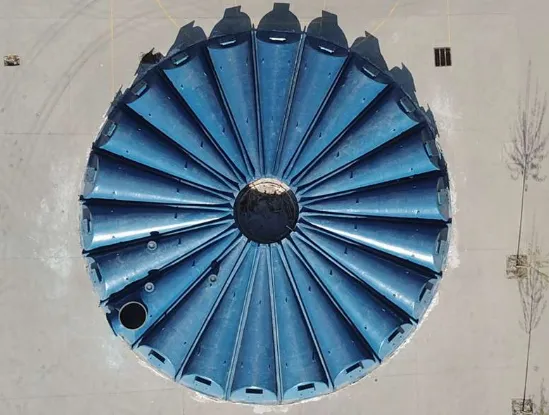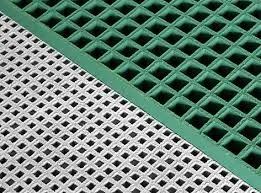
-
 Afrikaans
Afrikaans -
 Albanian
Albanian -
 Amharic
Amharic -
 Arabic
Arabic -
 Armenian
Armenian -
 Azerbaijani
Azerbaijani -
 Basque
Basque -
 Belarusian
Belarusian -
 Bengali
Bengali -
 Bosnian
Bosnian -
 Bulgarian
Bulgarian -
 Catalan
Catalan -
 Cebuano
Cebuano -
 China
China -
 China (Taiwan)
China (Taiwan) -
 Corsican
Corsican -
 Croatian
Croatian -
 Czech
Czech -
 Danish
Danish -
 Dutch
Dutch -
 English
English -
 Esperanto
Esperanto -
 Estonian
Estonian -
 Finnish
Finnish -
 French
French -
 Frisian
Frisian -
 Galician
Galician -
 Georgian
Georgian -
 German
German -
 Greek
Greek -
 Gujarati
Gujarati -
 Haitian Creole
Haitian Creole -
 hausa
hausa -
 hawaiian
hawaiian -
 Hebrew
Hebrew -
 Hindi
Hindi -
 Miao
Miao -
 Hungarian
Hungarian -
 Icelandic
Icelandic -
 igbo
igbo -
 Indonesian
Indonesian -
 irish
irish -
 Italian
Italian -
 Japanese
Japanese -
 Javanese
Javanese -
 Kannada
Kannada -
 kazakh
kazakh -
 Khmer
Khmer -
 Rwandese
Rwandese -
 Korean
Korean -
 Kurdish
Kurdish -
 Kyrgyz
Kyrgyz -
 Lao
Lao -
 Latin
Latin -
 Latvian
Latvian -
 Lithuanian
Lithuanian -
 Luxembourgish
Luxembourgish -
 Macedonian
Macedonian -
 Malgashi
Malgashi -
 Malay
Malay -
 Malayalam
Malayalam -
 Maltese
Maltese -
 Maori
Maori -
 Marathi
Marathi -
 Mongolian
Mongolian -
 Myanmar
Myanmar -
 Nepali
Nepali -
 Norwegian
Norwegian -
 Norwegian
Norwegian -
 Occitan
Occitan -
 Pashto
Pashto -
 Persian
Persian -
 Polish
Polish -
 Portuguese
Portuguese -
 Punjabi
Punjabi -
 Romanian
Romanian -
 Russian
Russian -
 Samoan
Samoan -
 Scottish Gaelic
Scottish Gaelic -
 Serbian
Serbian -
 Sesotho
Sesotho -
 Shona
Shona -
 Sindhi
Sindhi -
 Sinhala
Sinhala -
 Slovak
Slovak -
 Slovenian
Slovenian -
 Somali
Somali -
 Spanish
Spanish -
 Sundanese
Sundanese -
 Swahili
Swahili -
 Swedish
Swedish -
 Tagalog
Tagalog -
 Tajik
Tajik -
 Tamil
Tamil -
 Tatar
Tatar -
 Telugu
Telugu -
 Thai
Thai -
 Turkish
Turkish -
 Turkmen
Turkmen -
 Ukrainian
Ukrainian -
 Urdu
Urdu -
 Uighur
Uighur -
 Uzbek
Uzbek -
 Vietnamese
Vietnamese -
 Welsh
Welsh -
 Bantu
Bantu -
 Yiddish
Yiddish -
 Yoruba
Yoruba -
 Zulu
Zulu
Mar . 05, 2025 07:33
Back to list
Large Size Field Tanks
In the ever-evolving landscape of maritime technology, the use of fiber-reinforced plastic (FRP) pipes and fittings is making significant waves in shipbuilding. This advancement is transforming the industry by offering innovative solutions that marry durability with efficiency, addressing the modern demands of ship construction and operation.
Moreover, the installation process of FRP pipes and fittings embodies experience and skill, requiring specialized knowledge and precision. Shipbuilders and engineers who work with FRP materials underline the importance of understanding the mechanical properties and proper joining techniques to ensure optimal performance and safety. Their profound expertise ensures that the handling of FRP components is executed flawlessly, reinforcing the reliability of the vessels. In terms of authoritativeness, numerous case studies and industry reports validate the efficacy of FRP materials in shipbuilding. Leading maritime companies and research institutions consistently endorse FRP technologies through extensive testing and real-world applications. Their findings highlight the material's performance under extreme conditions, establishing FRP as a trusted standard within the shipbuilding community. The trustworthiness of FRP pipes and fittings is further bolstered by a legacy of proven results. Vessels equipped with FRP components have logged countless sea miles, consistently demonstrating their durability and dependability. Maintenance records reflect fewer incidents of wear and tear compared to traditional materials, assuring stakeholders of the material’s efficiency and reliability. Ultimately, FRP pipes and fittings represent a pivotal chapter in shipbuilding’s ongoing narrative. Their unmatched properties resonate with modern shipbuilding objectives of sustainability, cost efficiency, and high performance. As shipbuilders continue to embrace innovative materials like FRP, the maritime industry inches closer to a future where excellence and responsibility go hand in hand. Investing in FRP is not just a nod to contemporary demands but a strategic move towards a future-proof fleet.


Moreover, the installation process of FRP pipes and fittings embodies experience and skill, requiring specialized knowledge and precision. Shipbuilders and engineers who work with FRP materials underline the importance of understanding the mechanical properties and proper joining techniques to ensure optimal performance and safety. Their profound expertise ensures that the handling of FRP components is executed flawlessly, reinforcing the reliability of the vessels. In terms of authoritativeness, numerous case studies and industry reports validate the efficacy of FRP materials in shipbuilding. Leading maritime companies and research institutions consistently endorse FRP technologies through extensive testing and real-world applications. Their findings highlight the material's performance under extreme conditions, establishing FRP as a trusted standard within the shipbuilding community. The trustworthiness of FRP pipes and fittings is further bolstered by a legacy of proven results. Vessels equipped with FRP components have logged countless sea miles, consistently demonstrating their durability and dependability. Maintenance records reflect fewer incidents of wear and tear compared to traditional materials, assuring stakeholders of the material’s efficiency and reliability. Ultimately, FRP pipes and fittings represent a pivotal chapter in shipbuilding’s ongoing narrative. Their unmatched properties resonate with modern shipbuilding objectives of sustainability, cost efficiency, and high performance. As shipbuilders continue to embrace innovative materials like FRP, the maritime industry inches closer to a future where excellence and responsibility go hand in hand. Investing in FRP is not just a nod to contemporary demands but a strategic move towards a future-proof fleet.
Related Products
Latest news
-
Fiberglass 90 Degree Elbow for Custom Tanks & High Pressure Pipes Durable and Corrosion ResistantNewsJun.24,2025
-
Exploring the Benefits of Top Hammer Drifter Rods for Enhanced Drilling PerformanceNewsJun.10,2025
-
High-Precision Fiberglass Winding Machine for GRP/FRP Pipe Production – Reliable & Efficient SolutionsNewsJun.10,2025
-
FRP Pipes & Fittings for Shipbuilding - Corrosion-Resistant & LightweightNewsJun.09,2025
-
Premium FRP Flooring Solutions Durable & Slip-ResistantNewsJun.09,2025
-
Premium Fiberglass Rectangular Tanks Durable & Lightweight SolutionNewsJun.09,2025









